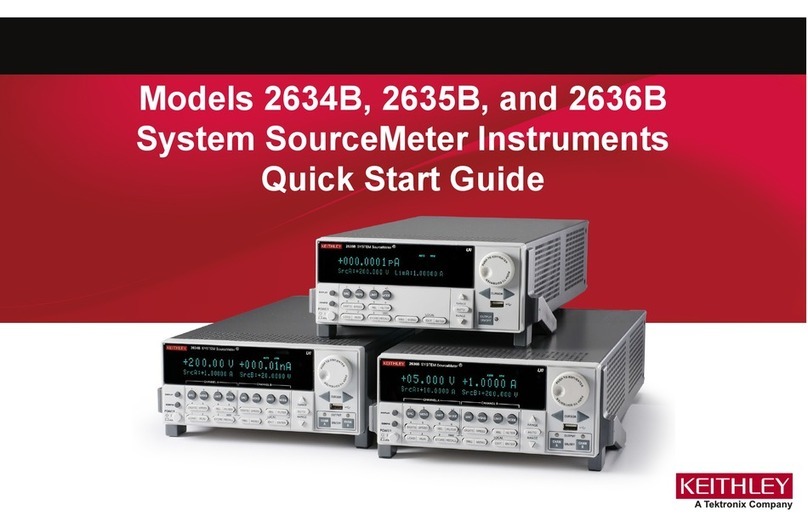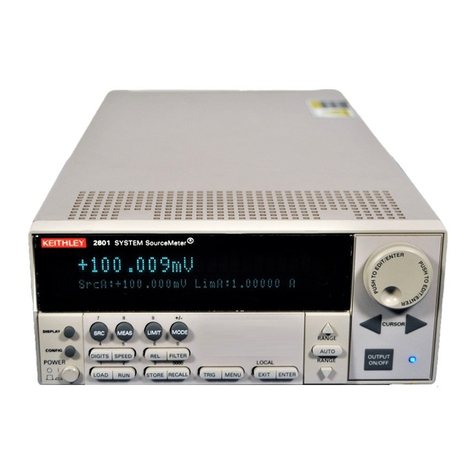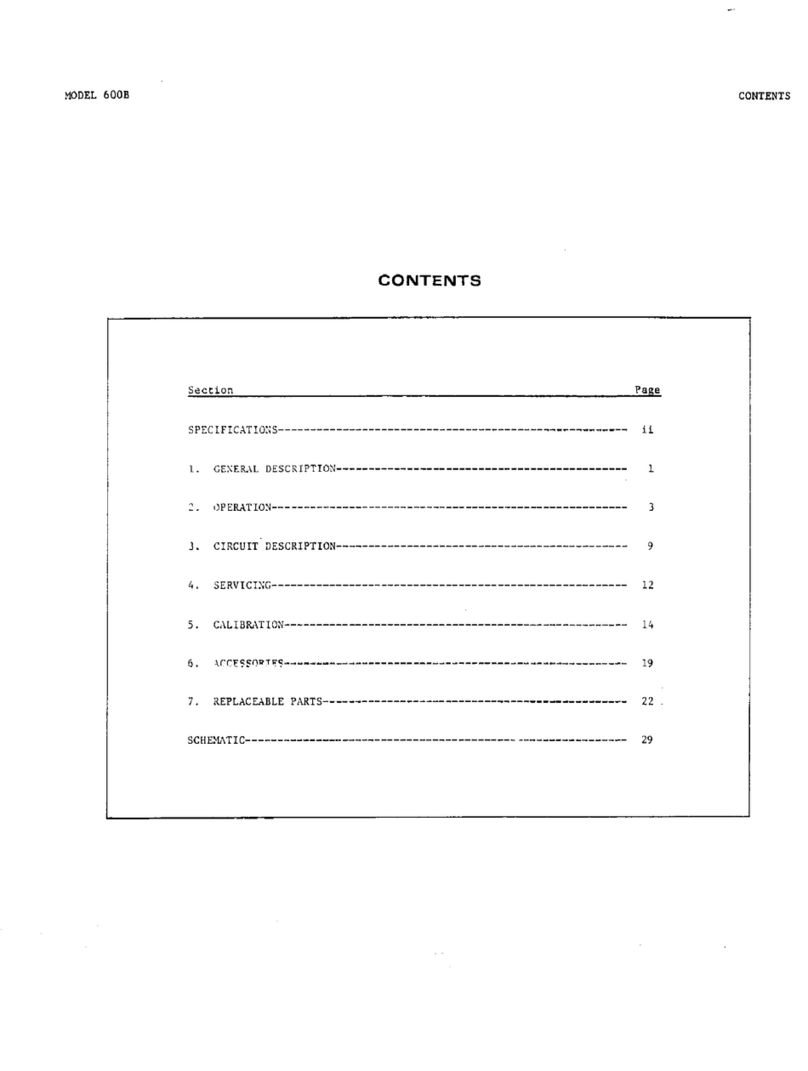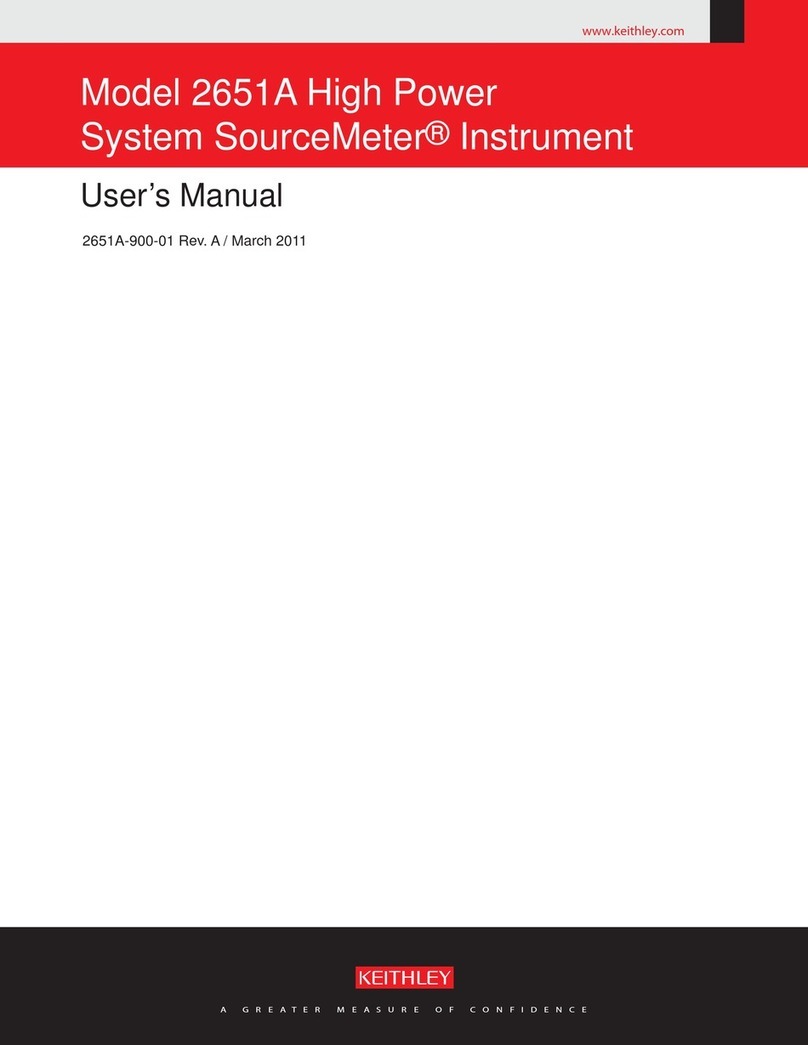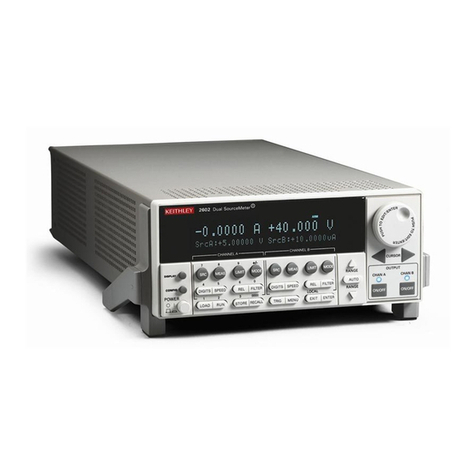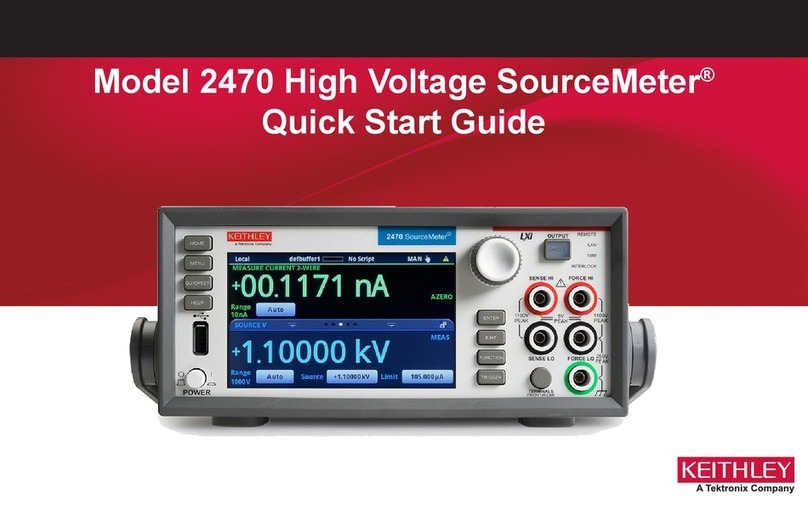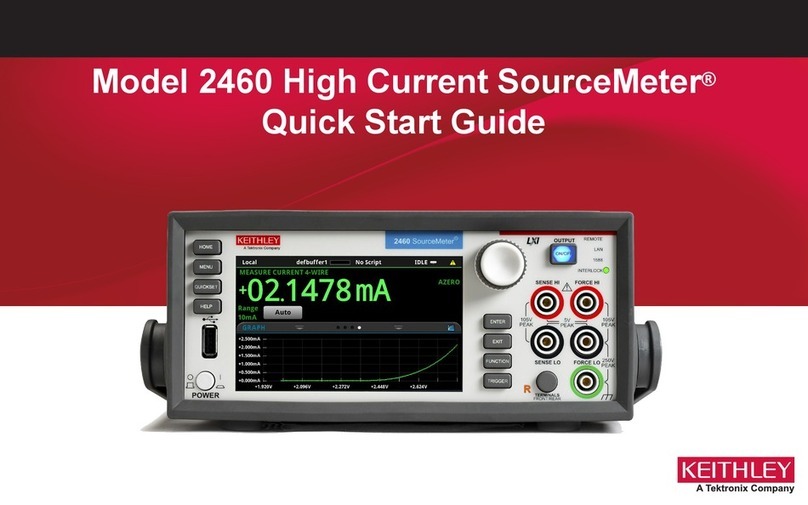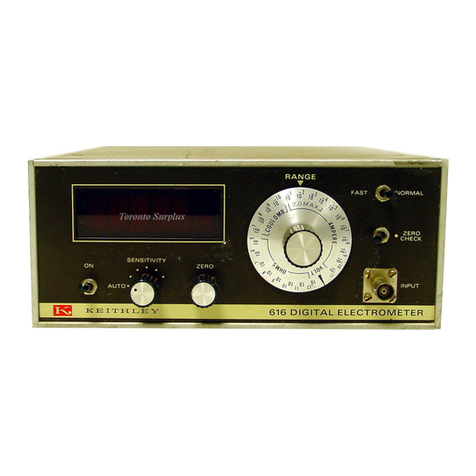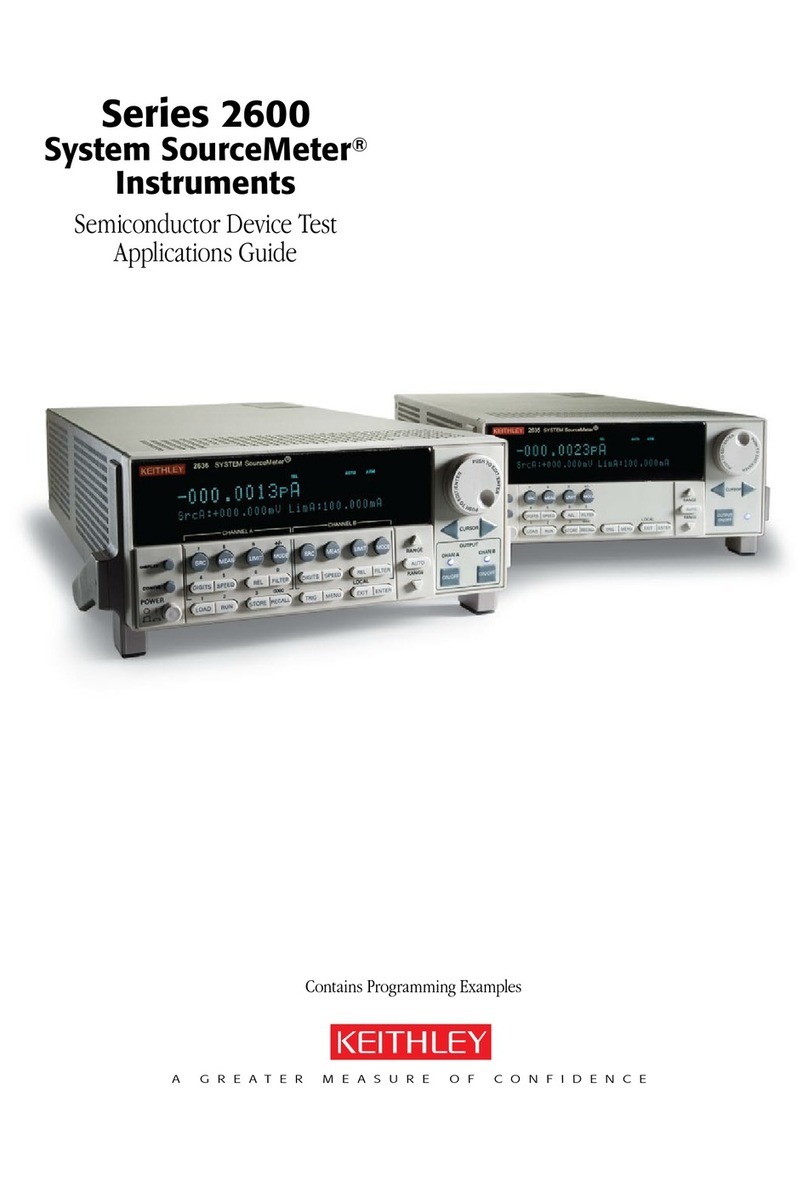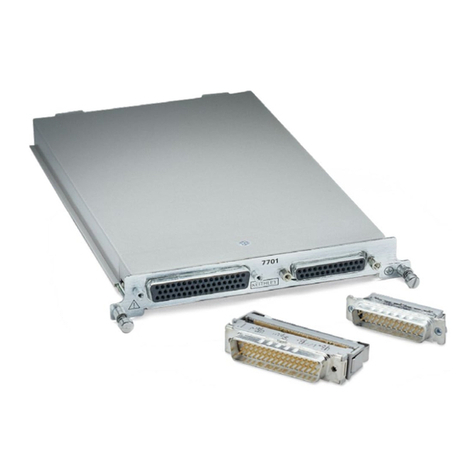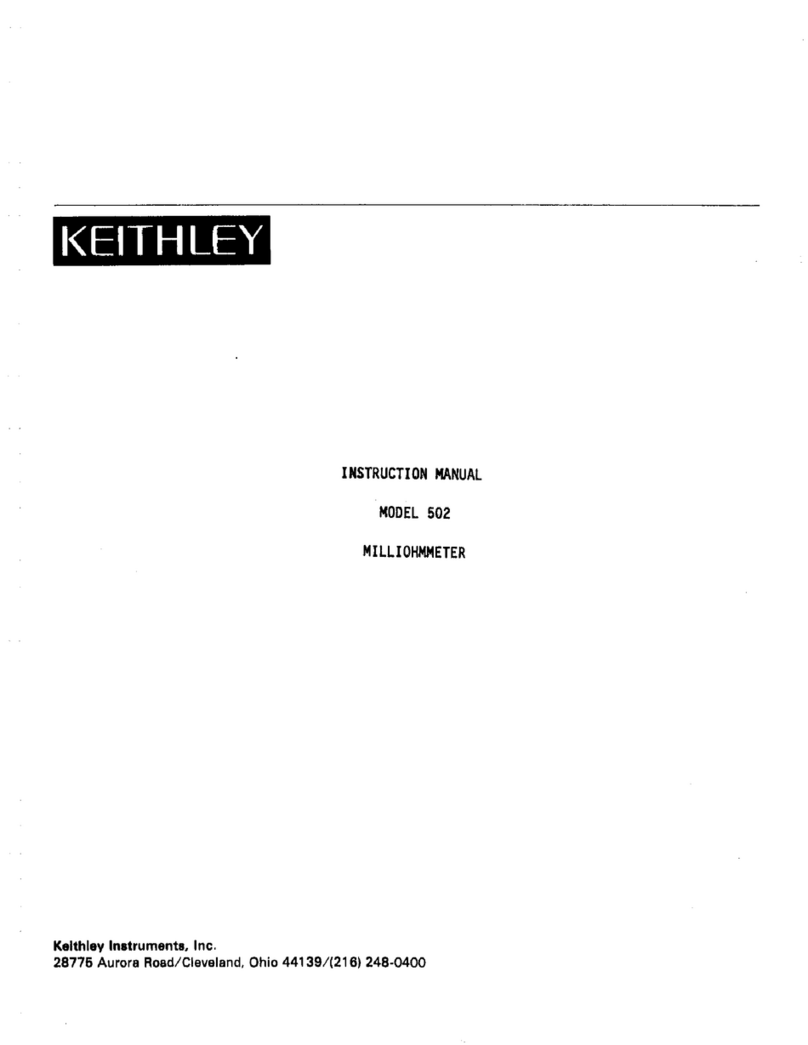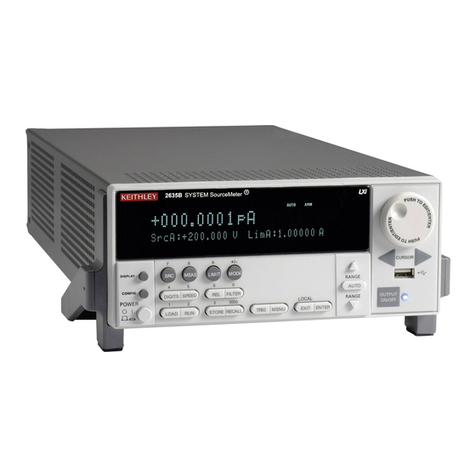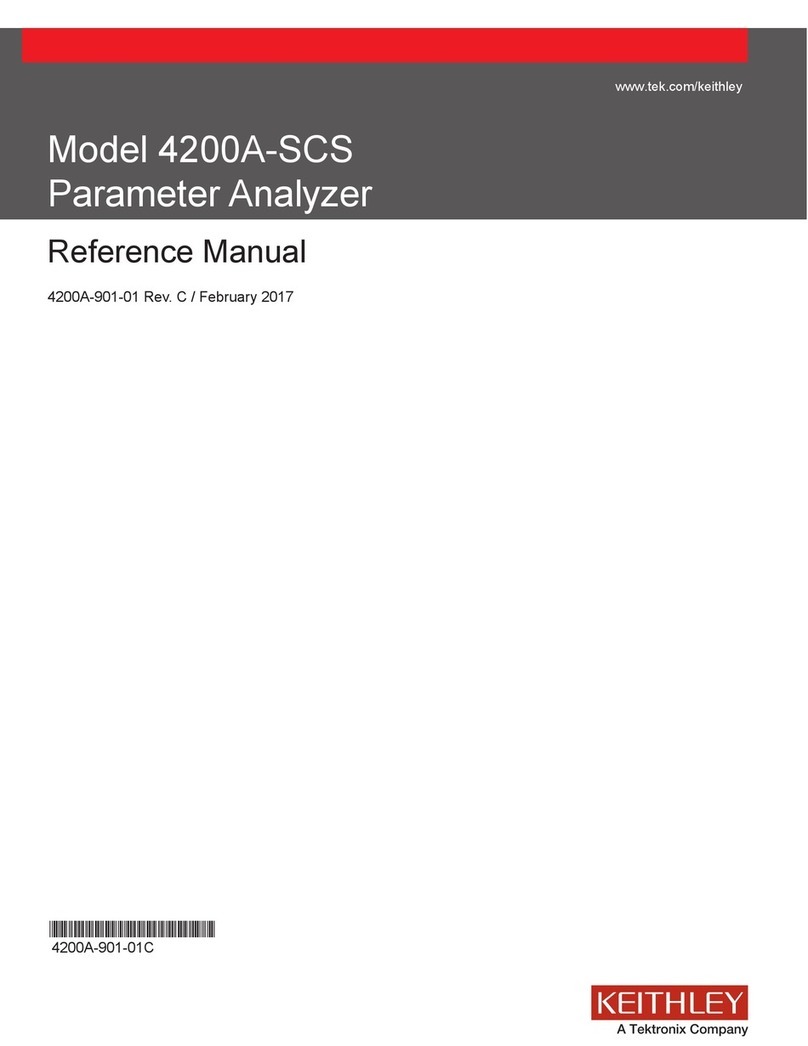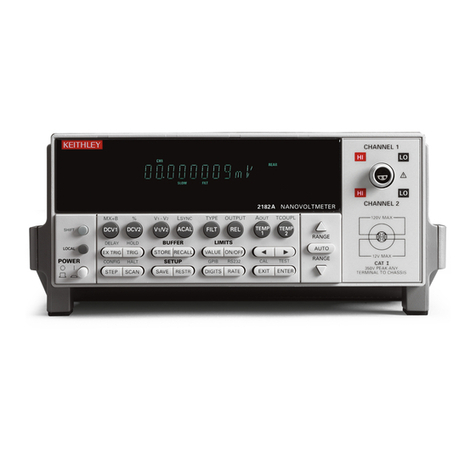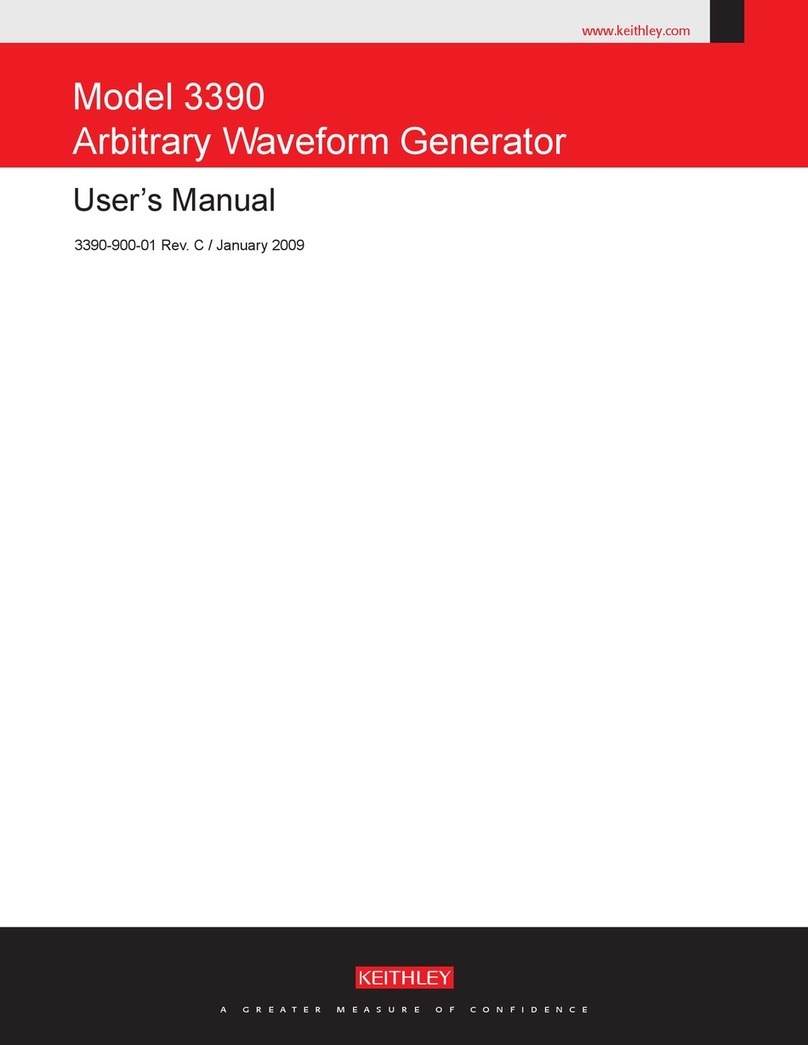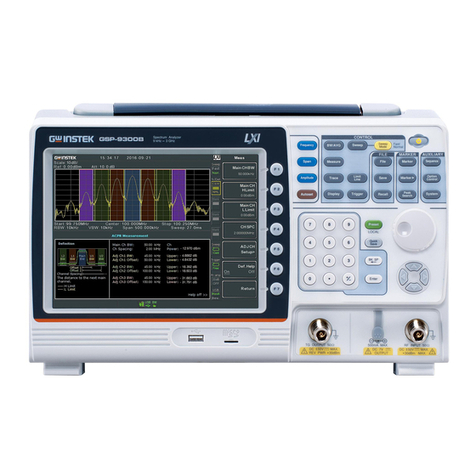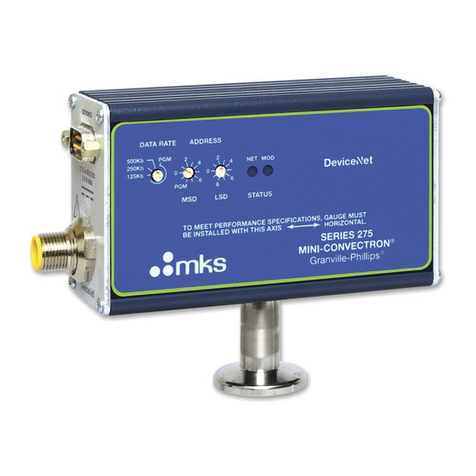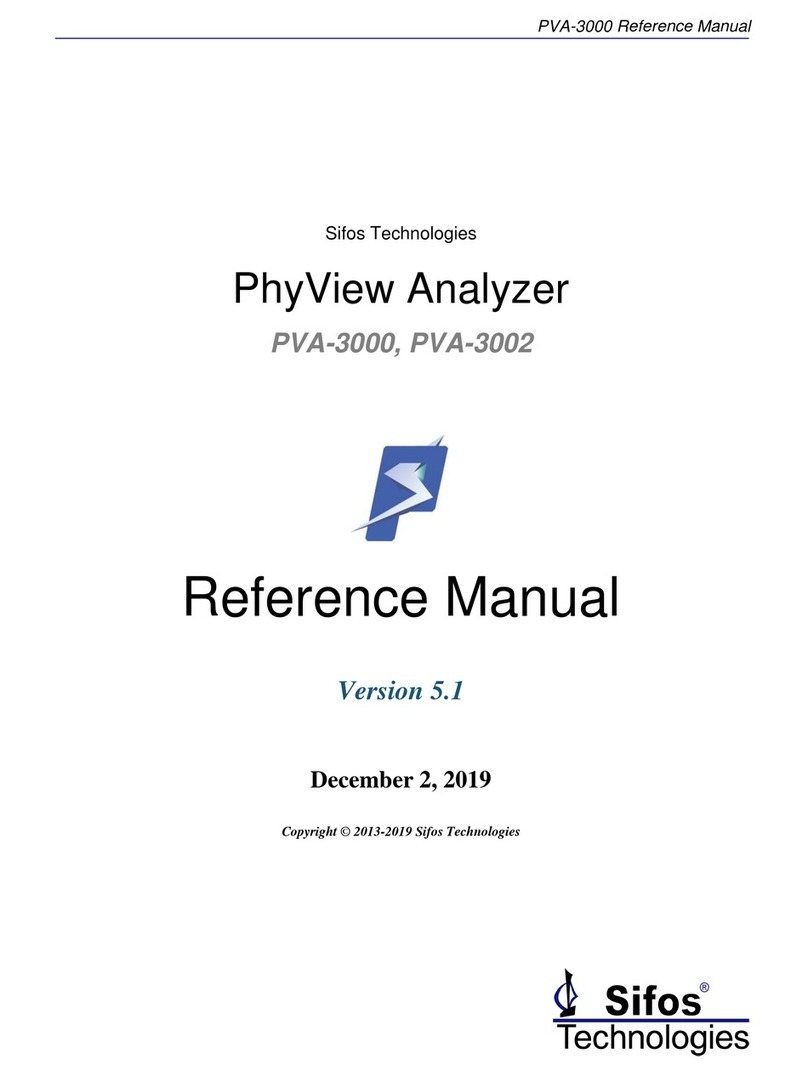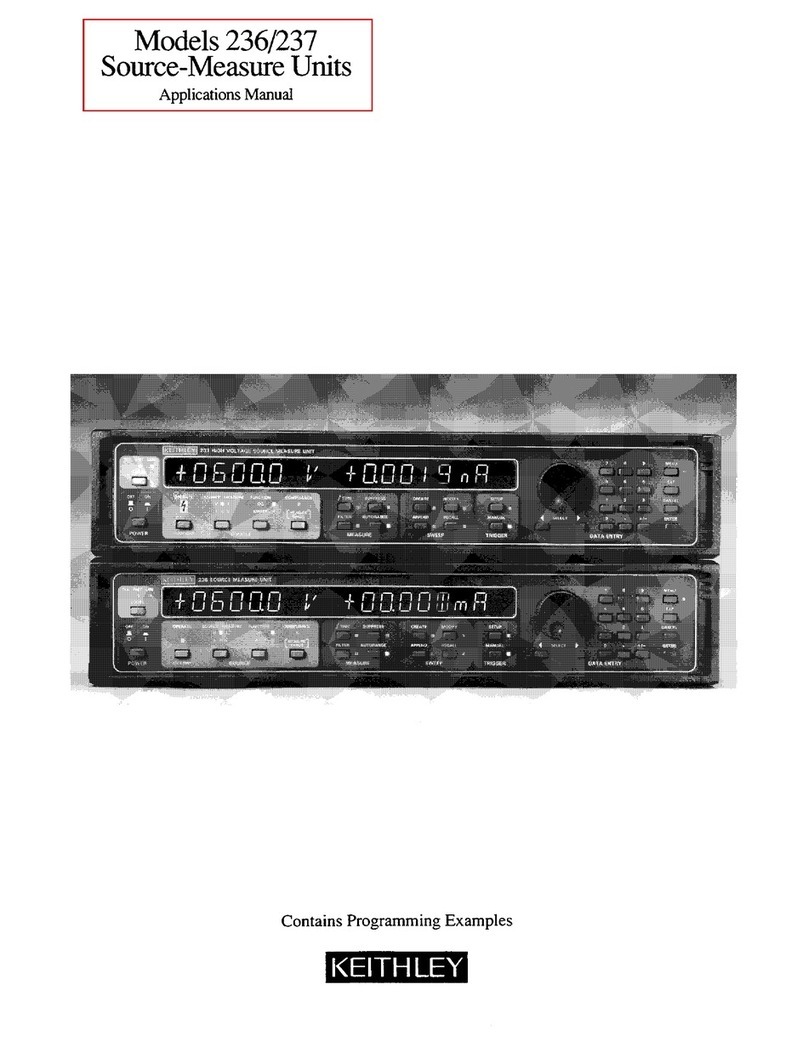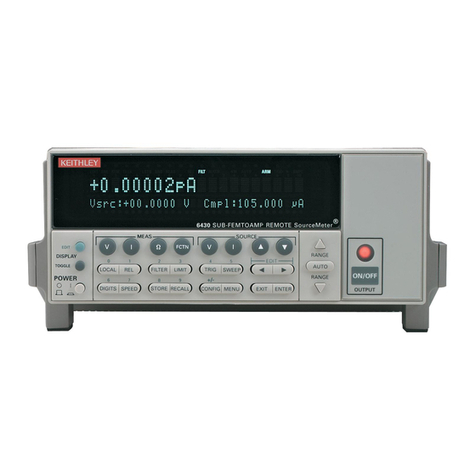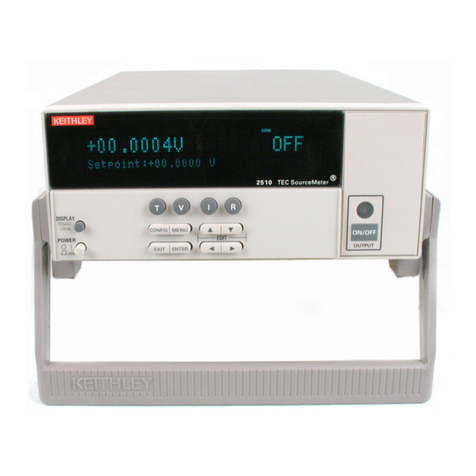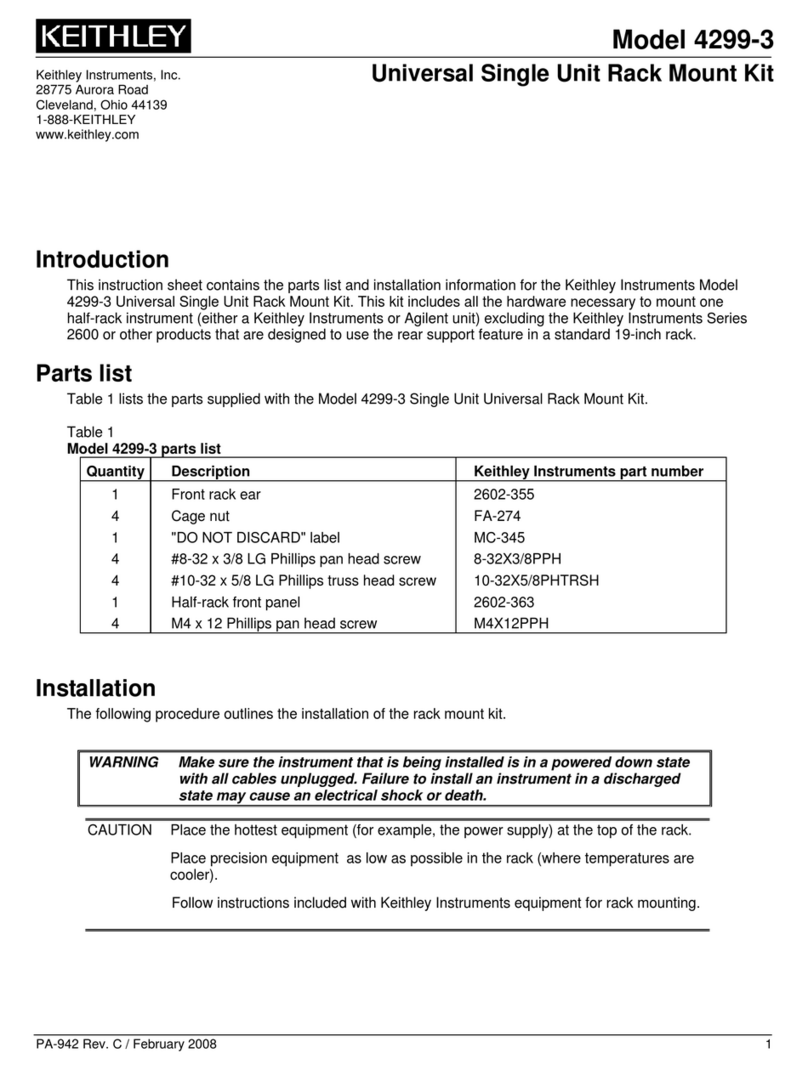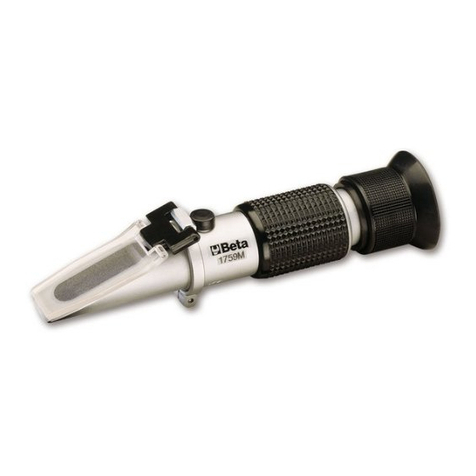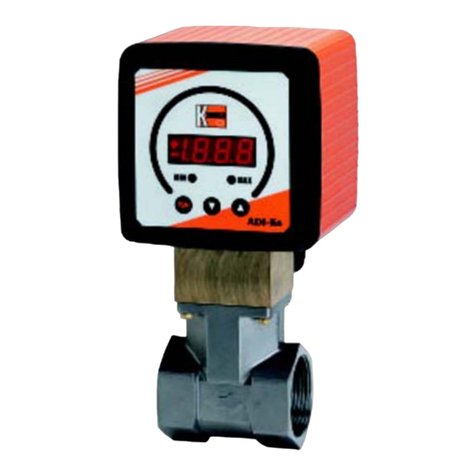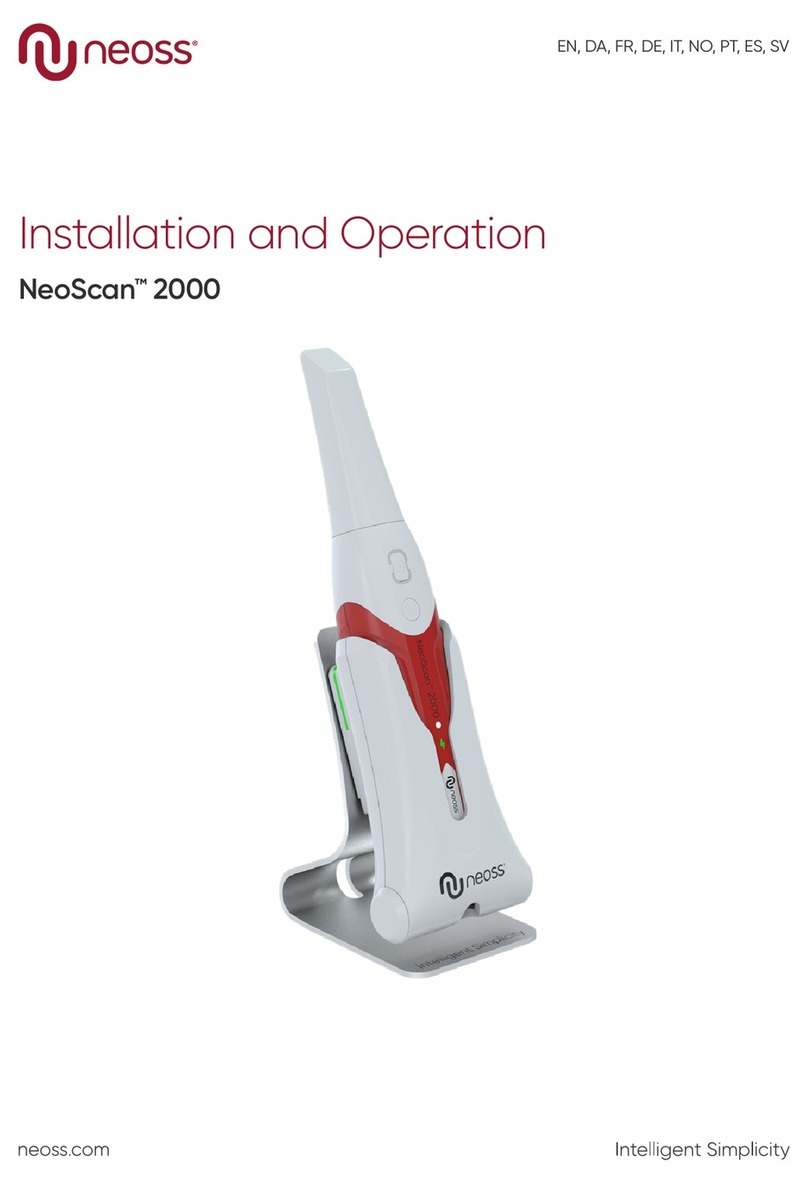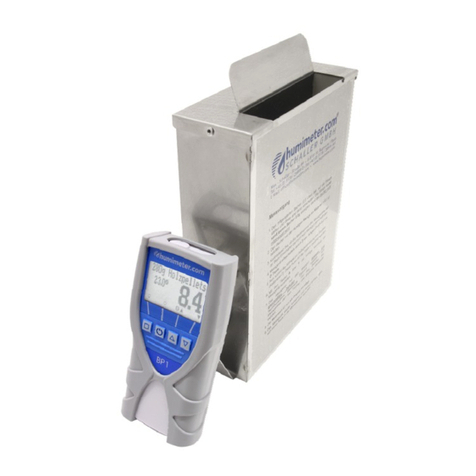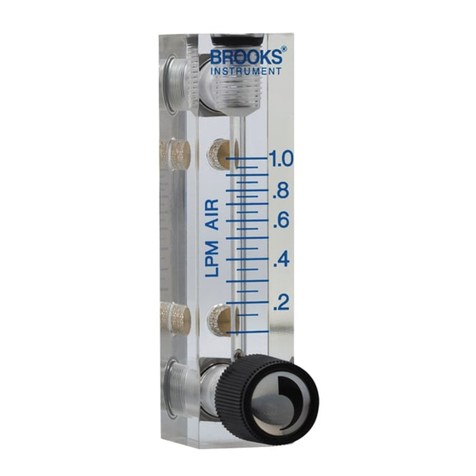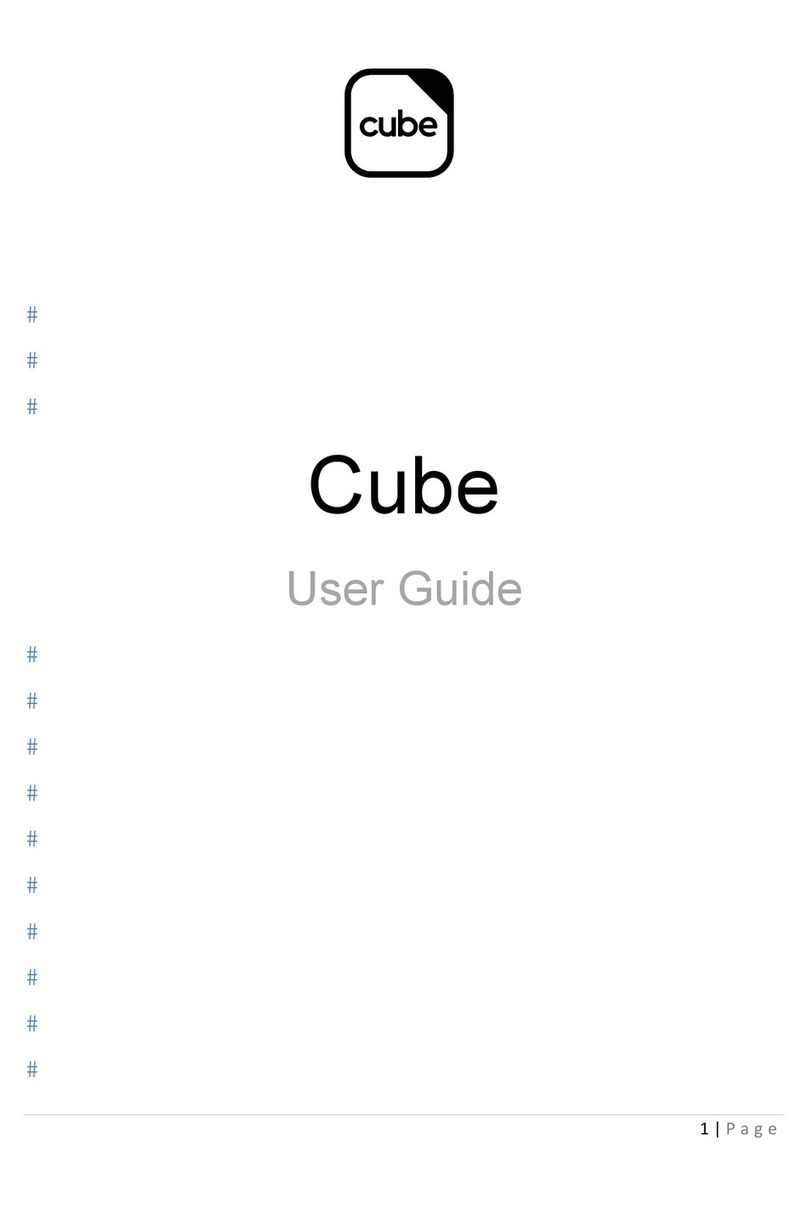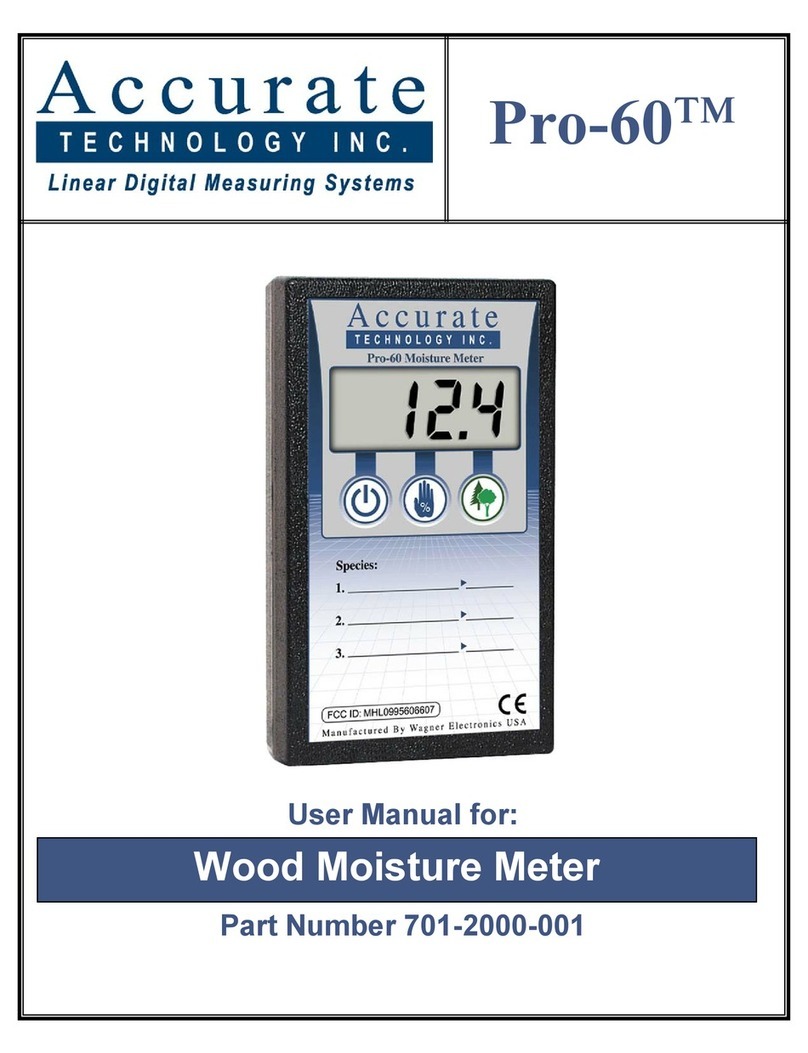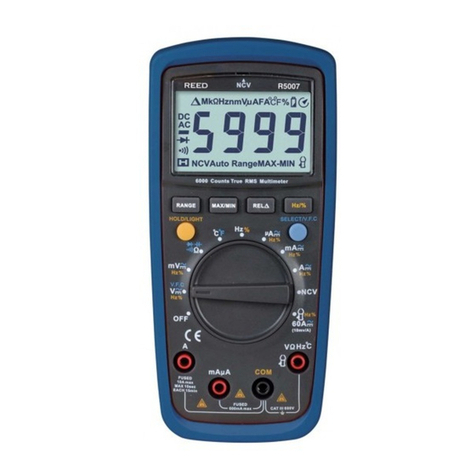
“ODE‘ 440
OPERATION
SECTION 2.
2-l. INPM CONNECTIONS.
a. Inp,,t Rece,,w.cle. The Input connecfor (51210)
is a Teflon-insulated UHF t.,w (Keithlev Part No. CS-
64). A mating (CS-49) conniCtor is supblied far mak-
ing
custom cables. The center terminal of
the connec-
tor is in the Input High terminal while the outer
shield is case ground. A separate grounding past “6”
is provided for system ground connections.
b. IDPUC Cables. Input connections should be made
using coaxial cables which are low-noise types with
graphite coaring beeween dielectric and
shield braid.
Far eu~eom length
cables Keithley Part No. SC-9 Low
Noise Coaxial Cable should be used.
1. Model 2611 Coaxial Cable. This cable is a
pre-assembled cable 24 inches long having a IMF male
connector on each end.
2. Part No. 19072C
Coaxial Test Cable. This
cable is a pre-assembled cable 30
inches long having
a UHF male connecmr an one
end
with alligator clips
on the ocher.
C. Insulaeio”.
Use high
resisrance, low-loss mafe-
rials such as sapphire, reflan, polyethylene or poly-
scyrene for insulation of the input circuit.
NOTE
The input terminal should be protected from con-
raminacion $0 chat the insulation will not be
degraded, Clean, dry connections and cables are
very important to maincain the value of all in-
sulation materials. Even the best insulation
can be compromised by due, dirt, solder flux,
films of oil or water vapor. A good cleaning
agent is methyl alcohol,
which dissolves most
comon dirt without chemically atracking the
insulation.
2-2. MEAS”RENENT CONSloEiWTIONS
a. Noise. The limit of resolurion in voltage and
current measuremen?.s is determined largely by rhe
noise penerared in rhe source. stray law-level noise
is presene in some form in nearly all electrical cir-
cuirs. The instrumenr does nor distinguish between
stray and signal currents since it measures the net
current. When using the picoampere ranges, consider
the presence of low-level electrical phenomena such
as thermocouples (thermoelectric effete), flexing of
coaxial cables (triboelecrric effect), apparent re-
sidual charges on capacitors (die-leccric absorption),
and baCCery action of two terminals (galvanic action).
OPERATION
1. Thermal EMUS. ThemaeLectric potentials
(thermal
emfs)
are generated
by thermal gradients
between
two junctions of dissimilar metals. These
can often be large compared to the signal to
be
measured. To minimize the drift caused by therma!
emfs, use pure copper leads “herever possible in
the source circuit. Drift can also
be minimized by
mainmining constant junction temperatures espec-
ially by using a large hear sink near the connec-
tions.
The Keifhley accessory Model 1483 Lou Ther-
mal Connection Kit contains ali necessary materials
far making very low rhemal copper crimp connections
far minimizing Chermal effects.
2. AC Electric Fields. The presence of electric
fields generated by paver lines or ocher sources
can have an effect on instrument operacion. AC
voltages which are very large with respect co the
full-scale range sensitivity could drive the ac
amplifier into sacuracion, thus producing an erron-
eous dc output. Proper shielding as described in
paragraph 2-1, d can minimize noise picl-up when
the instrument is in the presence of large ac fields
or when very sensitive measurements are being made.
3. Magnetic Fields.
The presence of scrang nag-
neck fields can be a potential source of ac noise.
Magnetic flux lines which CUL a conductor can pro-
duce large ac noise especially at power line fre-
quencies. The voltage induced due co magnetic flux
is prnpor~ional co ehe area enclosed by the circuit
as well as the rate of change of magnetic flux. For
example, the motion of a l-inch diameter loop in the
earth’s magnetic field will induce a signal of sev-
era1 tenths of a microvolt. One way to minimize
magneric pickup is to arrange all wiring so that the
loop area enclosed is as small as possible (such as
rwiscing input leads). A second way to minimize
magnetic pickup is co use shielding as described in
paragraph 2-1, b.
b.
ShieldinK.
1.‘ Electric Fields. Shielding is usually neces-
sary’when the
instrumnt is in
the presence
of very
large ac fields or when very sensitive measurements
are being made. The shields of the measurement cir-
cuit and leads
should be connected together co ground
a~ only one point. This provides a “tree”
config-
uration, which minimizes ground loops.
2. Magnetic Fields. Magnetic shielding is useful
where very large magnetic fields are present. Shield-
ing, which is
available in the farm
of plates. foil
or
cables,
can be used to shield the measuring cir-
cuir,,
the
lead wires, or the instrmenr itself.
0874 3



















